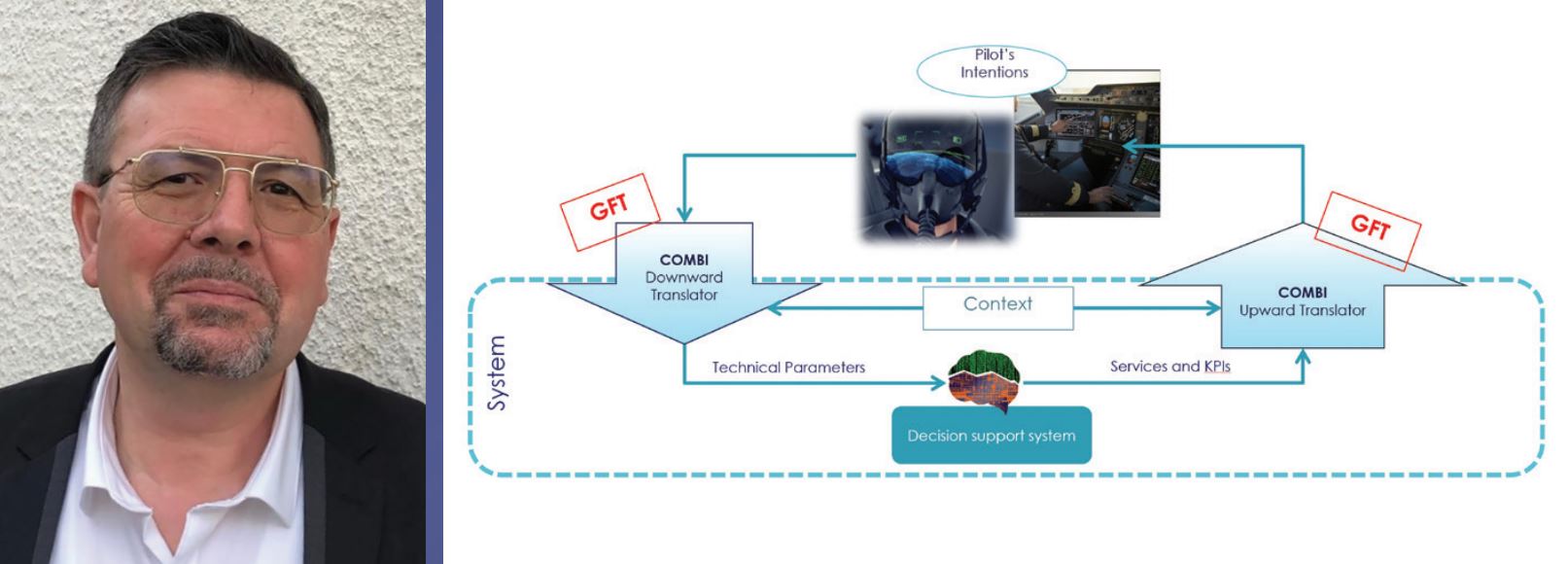COMBI

The second of the two winning projects is called COMBI (Bidirectional Communicator) and was proposed by Thales, a global high technology company active, among others, in digital and “deep tech” innovations.
We asked Marc Gatti, Human Autonomy Teaming (HAT) Department Director at Thales AVS/DMS France, to explain and summarise his team’s winning project:
“COMBI is a high-level operator ‘intentions’ translator from and to operator to and from plural intelligent systems within his working area.
The future of defence operations are expected to become even more complex. A similar mission to one carried out today will include several intelligent systems that combine the operator’s platform with those controlled remotely (teammates, drones, etc.). A more complex environment will not only increase the operator’s workload but also further distance from him to the vital decision-making process. Genuine collaborative work (from a human point of view) between humans and intelligent systems will be a game changer for future defence operations whatever the environment: ground, sea, sky or space.
Classically, the distribution of roles between human and artificial agent is called "authority sharing". It is limited to the analysis of the tasks to be performed (task analysis) and to the development of related autonomous functions. The operator is then responsible for adapting this assistance, to meet the technical parameters for carrying out the mission. However, authority sharing is not enough to tackle complex future defense missions (time consuming and technical skills). The collaboration level between human and artificial agents should be increased and this is the objective of the Human-Autonomy Teaming (HAT) concept.
One of the most important characteristics of HAT is efficient dialogue between participants. This is the way to establish a shared representation of the situation to reduce misunderstandings and improve decision-making. However, the way dialogue is performed depends on the situation. To reduce the cognitive workload of managing complex systems, the communication level must be conducted at a high level of abstraction.
Human activity is organized according to a goal to be achieved which is driven by intentions (Leontiev, 1984). COMBI takes advantage of these intentions to establish a dialogue between the operator and the intelligent systems, reducing drastically the human mental workload.
COMBI is composed of: - a top-down transfer function that translates pilot's high-level intentions into intelligible parameters for the solvers, optimizing their treatment; - and a bottom-up transfer function that translates solver results into the high-level pilot referential operational intentions and parameters”

Thales (Euronext
Paris: HO) is a global high technology leader investing in digital and “deep tech” innovations: connectivity, big data, artificial intelligence, cybersecurity and quantum technology. The company provides solutions, services and products
that help its customers (businesses, organisations and states) in the defence, aeronautics, space, transportation and digital identity and security markets to fulfil their critical missions, by placing humans at the heart of the decision-making process.
In the field of aeronautics, Thales supports aircraft manufacturers, armed forces, airlines, operators, pilots, crews and passengers in making improvements to flight efficiency, safety and comfort. The secure, natively connected systems that Thales
designs allow aircraft, helicopters and drones to fly under all conditions and to interface with all parts of the aeronautical ecosystem, on the ground or in flight.